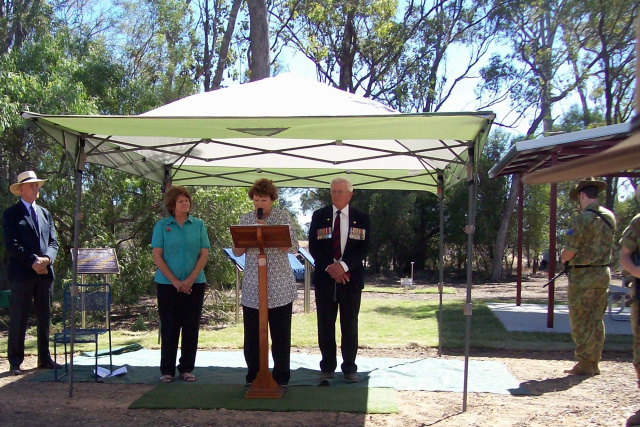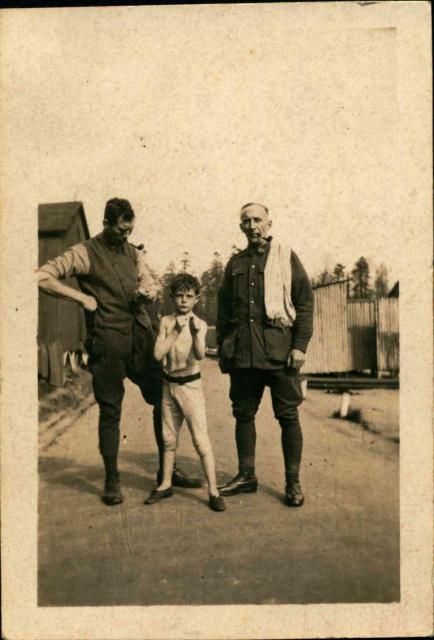Young Digger new edition
Introduction
The story of how No. 4 Squadron of the Australian Flying Corps in 1919 smuggled home their boy mascot 'Henri Hemene Tovell', called Young Digger, was described by the military historian, Arthur Bazley, as ‘one of the most extraordinary incidents of the First World War’. He was right.
No less extraordinary for myself has been the heartfelt response to this book since it first appeared. People everywhere have been so touched by the tale of the little French war orphan, they have sought in all kinds of ways to carry it forward: hoping perhaps to bring closure to Digger's story, but in fact ensuring it has not yet reached its end.
 Most generously the RAAF Association in Victoria and the Department of Veterans Affairs in 2009 replaced his gravestone in Fawkner Cemetery, which had been vandalised and fallen into neglect. The verse that Digger’s foster father – the airman Tim Tovell – wanted inscribed on the tomb was at long last put there. Who plucked this flower..?
Most generously the RAAF Association in Victoria and the Department of Veterans Affairs in 2009 replaced his gravestone in Fawkner Cemetery, which had been vandalised and fallen into neglect. The verse that Digger’s foster father – the airman Tim Tovell – wanted inscribed on the tomb was at long last put there. Who plucked this flower..?
The verse on Digger's new grave
Very importantly Tim's youngest daughter, Edith Lock, spoke with great emotion at the graveside about the lad she's always known as her 'big brother', so reconciling years of estrangement between the family and the Air Force.
Indeed, 4 Squadron had recently been re-formed, and a service chaplain led the prayers. An honour party from the squadron was present, and so was the-then CO Wing Commander Dave Paddison. Now in its third incarnation from the First World War, the fighter squadron celebrates its centenary this year, and it's wonderful to see how they've taken Digger back to their corporate hearts: not as a mascot certainly, but as an essential element in the unit's history and ethos.
Young Digger's original gravestone stands outside squadron HQ as a constant reminder; and the Sergeant Tim Tovell shield is given annually to the squadron member 'who best demonstrates the qualities of Loyalty, Dedication, Compassion and Pride in the unit and the broader Air Force'. The present CO, Wing Commander Harvey Reynolds ensures the tradition continues.

Tim Tovell's grandchildren unveil Digger's plaque 2016
The story is being carried forward in other forms as well. This year a memorial plaque to Digger and Tim, generously funded by the Tovell family, was unveiled at Trumpeters’ Corner, near Jandowae in Queensland, where Tim brought the war orphan home to his wife and family, and raised him as one of their own.
In Europe several people, including my friend Anny de Decker, have been trying to find out who the boy really was, for even his name is uncertain. As will become clear, I believe his first name was Honoré, although it was easier for Australian tongues to call him Henri (or Henry), and in later life he signed his name Henri Hemene Tovell.
Who knows if they'll recover the truth after nearly a century, a Second World War, and so many more records lost in northern France? In one sense it is the boy's very anonymity that gives the story much of its power: an Unknown War Orphan, like an Unknown Soldier of the Great War; though to give him back his real identity would indeed bring the tale to its ultimate conclusion.
 Even so, old photographs are sometimes discovered that shed new light on Young Digger. A Melbourne reader, David Daws, found three such pictures in an album owned by his late father Leslie, who served with the squadron in 1918-19.
Even so, old photographs are sometimes discovered that shed new light on Young Digger. A Melbourne reader, David Daws, found three such pictures in an album owned by his late father Leslie, who served with the squadron in 1918-19.
One of them forms the cover of this edition: a magically intense portrait of the boy with Tim's brother Ted Tovell, taken at Hurdcott Camp on the way home, that in a single image captures so much of the devotion that bound the child to the airmen and they to him, and which led them to risk a great deal to bring him back to Australia at war's end to give the lad a better chance in life.
Digger in fighting trim with Tim Tovell (l) at Hurdcott
Courtesy David Daws
I've always thought the emotions that impelled this story – the desire to get Henri home, to see him safe – were essentially adult ones.
It's therefore with deep gratitude that I welcome Penguin's decision to publish this new edition of Young Digger: one that will place this remarkable tale of hope and renewal drawn from the ashes of war before a new and wider audience. An audience that doubtless will add its own chapters to a tale that is not yet over. Perhaps even the bronze statue of the ragged orphan boy, that once surmounted his grave, will eventually reappear from somebody’s garden.
It will be seen from the References that I consulted many sources when writing this biographical novel. Several versions of Digger's story were published over the years. Where the accounts differed I ultimately relied on Tovell, for he was closest to the boy; and where there were gaps in the record I had to make certain assumptions, mentioned in the Chapter Notes, which I hope are not inconsistent with the known facts, although future research may produce new evidence.
Thus in all such ways for this author, his readers and Australia’s collective memory at large, the extraordinary story of Young Digger continues into another generation.
Anthony Hill
Canberra
2016